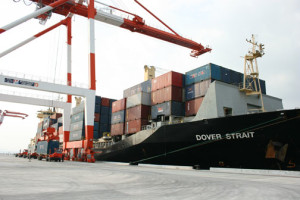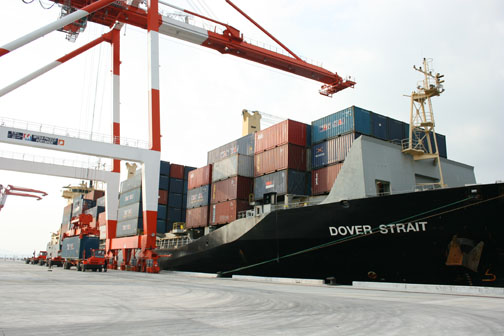
THE Philippine Ports Authority (PPA) has submitted to the government a roadmap towards decongesting Metro Manila and developing seamless intermodal logistics corridors.
Hector Miole, PPA port district manager for Southern Luzon, said public and private-sector stakeholders are hammering out a program that will lead to a gradual shift of a substantial volume of international container cargo to heavily underutilized Batangas and Subic ports.
Batangas is two hours south of the Philippine capital Manila and Subic, three hours north of Manila.
Miole presented the PPA roadmap to the Department of Transportation and Communications (DOTC) for evaluation by the National Economic and Development Authority Infrastructure and Utilities Development Committee.
The same paper was presented at the Department of Justice-PPA forum on the ports last Thursday in which Miole said railway connectivity to ports along the Subic-Clark-Manila- Batangas corridor can be implemented by the DOTC, Philippine National Railways, PPA and Subic Bay Metropolitan Authority (SBMA).
The study for such a program may take eight months to complete and could be implemented in three years, he said.
In addition to rail connectivity, dry ports could be established in Calabarzon (Cavite, Laguna, Batangas, Rizal and Quezon) through joint efforts of the DOTC, PPA, SBMA and the Department of Public Works and Highways. A separate study for this project could similarly take eight months to complete for implementation in three years.
“Our action plan also entails the promotion of barge transport for the Cavite, Manila, Batangas, Subic ports and they must be given tax incentives,” Miole said.
He said PPA will be working with the Maritime Industry Authority for such a plan, targeted to be implemented between January 2014 and January 2016.
Meanwhile, the PPA is studying shipping connectivity, feeder and transshipment potentials of Batangas and Subic ports, as well as the simplification of customs processes, particularly in line with the implementation of the National Single Window.
Port Users Confederation Inc president Dominador de Guzman pushed the development of a multimodal transport system, with a railway linking Manila with Batangas and Subic ports.
He said trucking costs from Batangas and Subic to Manila would be very high — at about P20,000 to P30,000 per trip — should the government push through with its cargo diversion plans.
“Transit time between Batangas or Subic to Manila is 2½ to 3 hours, which makes the turn- around time of trucks longer,” he said.
Port operators
Manila North Harbour Port Inc. chief executive officer Richard Barclay said an efficient port access road system to connect the three terminals with the highways is vital, as it will provide an opportunity to lift the truck ban, increase trucking efficiency in trucking by enabling more road trips per day, and eliminate congestion from R-10 through Anda Circle on Bonifacio Drive.
International Container Terminal Services Inc. vice president and head of Asian region Christian Gonzalez said depots should be located near industrial zones. They don’t have to be necessarily adjacent to ports.
“Using non-free-market policies to drive cargoes to Batangas and Subic will have huge cost implications for the end-users and the logistics industry and a number of hidden pitfalls. For government to continue having consultations to drive forward a master plan that makes Manila a symbol of our economic strength, you need to have an equal amount of patience required to make Subic and Batangas ports grow as they are primed for growth,” Gonzalez said .
Asian Terminals, Inc. executive vice president Andrew Hoad said restricting port development is not consistent with promoting competition.
“Restricting port development discourages competitive efficiencies. Limiting port capacity will not force shipping lines to move to Subic or Batangas, rather it will put pressure on efficiency,” he said.
The Philippine International Seafreight Forwarders Association Inc. also supported the idea, saying transport of cargo to the Batangas and Subic ports would mean additional overhead costs for forwarders and customers since most importers and exporters are based in Manila.
Arangkada, a project of the Joint Foreign Chambers of Commerce, said lower fees/charges must be given by government as incentives to shipping lines and service providers.
Photo courtesy of Subic Bay International Terminal Corp






Logistics solution to achieve equilibrium for Manila, Subic and Batangas ports must be lead by real team , a dedicated group composed of experts and visionary people with the support of private and public (dynamic)sectors. Nothing is impossible, man has reached the moon already…Manila is a small stuff compared to what astronauts had achieved before. Go for it ! and use the power of Now !
Comments are closed.